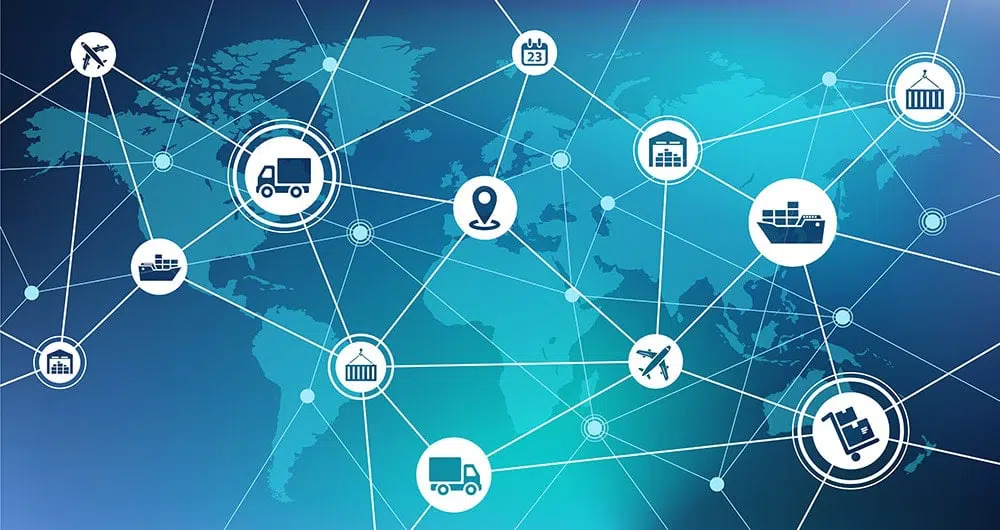In today’s interconnected world, an organisation’s supply chain is both a vital asset and a significant vulnerability. Supply chains often involve numerous third-party vendors, complex logistics, and vast amounts of shared data, making them an attractive target for cybercriminals, fraudsters, and even nation-state actors.
At Rockfort Security Consultants, we understand the importance of securing your supply chain to protect your operations, reputation, and bottom line. Here, we outline practical measures to strengthen your supply chain security and build resilience against evolving threats.
1. Conduct Thorough Risk Assessments
The first step in securing your supply chain is identifying vulnerabilities. Conduct a comprehensive risk assessment to evaluate:
– Third-party vendor risks: Assess suppliers’ cybersecurity practices, financial stability, and operational reliability.
– Data-sharing risks: Analyse how sensitive information is shared, stored, and protected across the supply chain.
– Physical security risks: Review the handling, transportation, and storage of goods to identify weak points.
This process allows you to prioritise risks and allocate resources to the areas of greatest concern.
2. Implement Vendor Due Diligence
Your security is only as strong as your weakest link. Before engaging with new suppliers or partners, conduct robust due diligence to verify their security practices. Key considerations include:
– Cybersecurity standards: Ensure vendors comply with recognised standards, such as ISO 27001 or NIST Cybersecurity Framework.
– Regulatory compliance: Verify adherence to regulations relevant to your industry, such as GDPR or CCPA.
– Incident history: Investigate past security incidents or breaches involving the vendor.
Regularly reassess existing vendors to ensure ongoing compliance and address any emerging risks.
3. Enhance Visibility Across the Supply Chain
A lack of transparency can create blind spots that expose your organisation to risks. Enhance supply chain visibility by:
– Using technology: Employ tracking tools, IoT devices, and blockchain solutions to monitor goods in transit and verify authenticity.
– Centralising data: Consolidate information from various supply chain partners into a single platform for easier monitoring and analysis.
– Real-time updates: Set up systems to provide real-time alerts for anomalies, delays, or security breaches.
Improved visibility allows you to identify and respond to issues before they escalate.
4. Strengthen Cybersecurity Defences
Cyber threats, such as ransomware attacks and data breaches, are among the most significant risks to supply chains. Strengthen your organisation’s cybersecurity posture by:
– Implementing multi-factor authentication (MFA) for accessing supply chain systems and data.
– Encrypting sensitive data shared with vendors to protect it from interception.
– Conducting regular penetration testing to identify and address vulnerabilities in your network.
Encourage your supply chain partners to adopt similar measures to ensure end-to-end protection.
5. Establish Robust Contracts and Agreements
Formal agreements with suppliers should clearly define security expectations and accountability. Include provisions for:
– Security standards: Specify the minimum cybersecurity measures vendors must implement.
– Incident reporting: Require vendors to notify you immediately of any security incidents that could impact your operations.
– Auditing rights: Retain the right to audit suppliers’ security practices and systems periodically.
These contractual safeguards create a clear framework for collaboration and accountability.
6. Train Employees and Partners
Human error remains a common cause of security breaches. Provide ongoing training to employees and supply chain partners on topics such as:
– Recognising phishing attempts and social engineering tactics.
– Safeguarding sensitive data and avoiding unauthorised sharing.
– Responding to potential security incidents.
Building a culture of awareness and vigilance across the supply chain is essential for minimising risks.
7. Monitor for Emerging Threats
Supply chain threats are constantly evolving, requiring continuous monitoring and adaptation. Stay ahead of potential risks by:
– Engaging threat intelligence services to track global supply chain vulnerabilities.
– Monitoring supplier performance for signs of instability, such as missed deliveries or financial difficulties.
– Conducting regular audits to ensure compliance with security protocols.
Proactive monitoring enables you to address issues before they impact your organisation.
8. Develop an Incident Response Plan
Despite your best efforts, security incidents can still occur. Prepare for these scenarios with a detailed incident response plan, including:
– Clear communication protocols for notifying stakeholders, vendors, and customers.
– Designated response teams to manage investigations and remediation efforts.
– Business continuity measures to minimise disruptions to operations.
Regularly test and update your plan to ensure its effectiveness.
Securing your organisational supply chain is a critical component of protecting your business and maintaining the trust of your customers and partners. By implementing the measures outlined above, you can significantly reduce vulnerabilities and build a resilient supply chain capable of withstanding modern threats.
At Rockfort Security Consultants, we provide tailored solutions to help organisations secure their supply chains, from risk assessments to advanced threat monitoring. Contact us today to learn how we can safeguard your supply chain and ensure the continuity of your operations.

